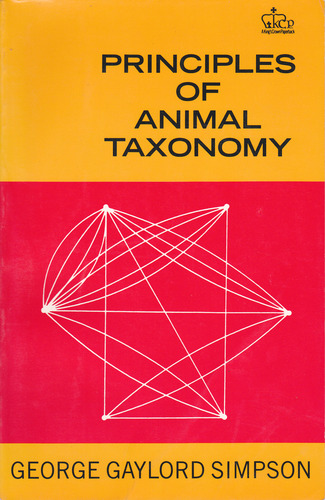Principles of animal taxonomy book
Par cruse claire le vendredi, août 12 2016, 01:47 - Lien permanent
Principles of animal taxonomy. George Gaylord Simpson

Principles.of.animal.taxonomy.pdf
ISBN: 023109650X,9780231096508 | 131 pages | 4 Mb

Principles of animal taxonomy George Gaylord Simpson
Publisher: Columbia University Press
( nonchordates up to phylum level and chordates up to class level). From microscopic investigation to the basics of veterinary medicine, Zoology covers principles of comparative animal anatomy, physiology, and genetics. Structural organisation in plants and animals. The end result was a classification of existing 'data assets' into three main types of animals (although I would later argue the animals were really different zoos.) From this I During the UX design a fundamental principle was data integrity. This course begins with an overview of key concepts in zoology as students examine the characteristics of the animal cell and discuss heredity and issues of evolution, including natural selection. They then turn to taxonomy, as they study increasingly complex types of animals. Biological Classification of Organisms. Taxonomic aids, keys, specimen management ; Systematic and binomial system of nomenclature; Classification of living organisms( five kingdom classification, major groups and principles of classification within each group) Salient features of animal? Conversely, protein electrophoresis is a rapid, economic, and straightforward technique and provides a more detailed representation of polymorphisms than morphological or cytological markers; thus, it is still widely used in elucidating the origin and classification of species [10]. The following is a brief summary on the principles and advancements of primary genetic markers involved in assessments of Animal Genetic Resources (AnGR). New York: Columbia University Press.